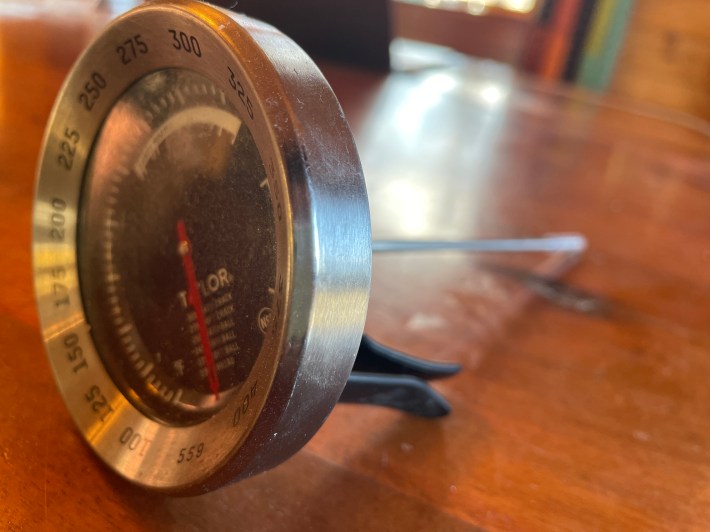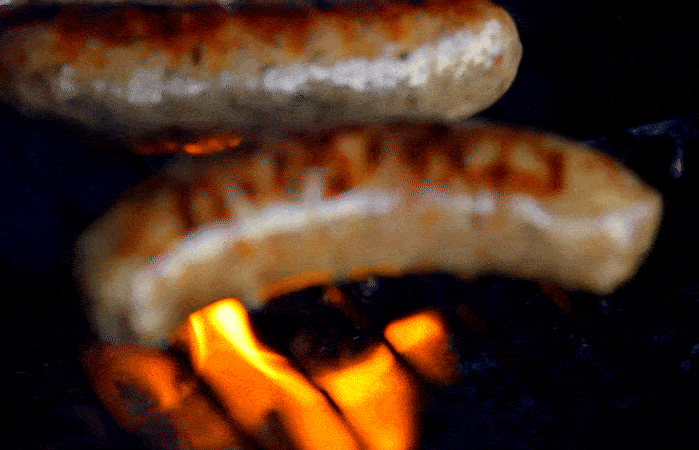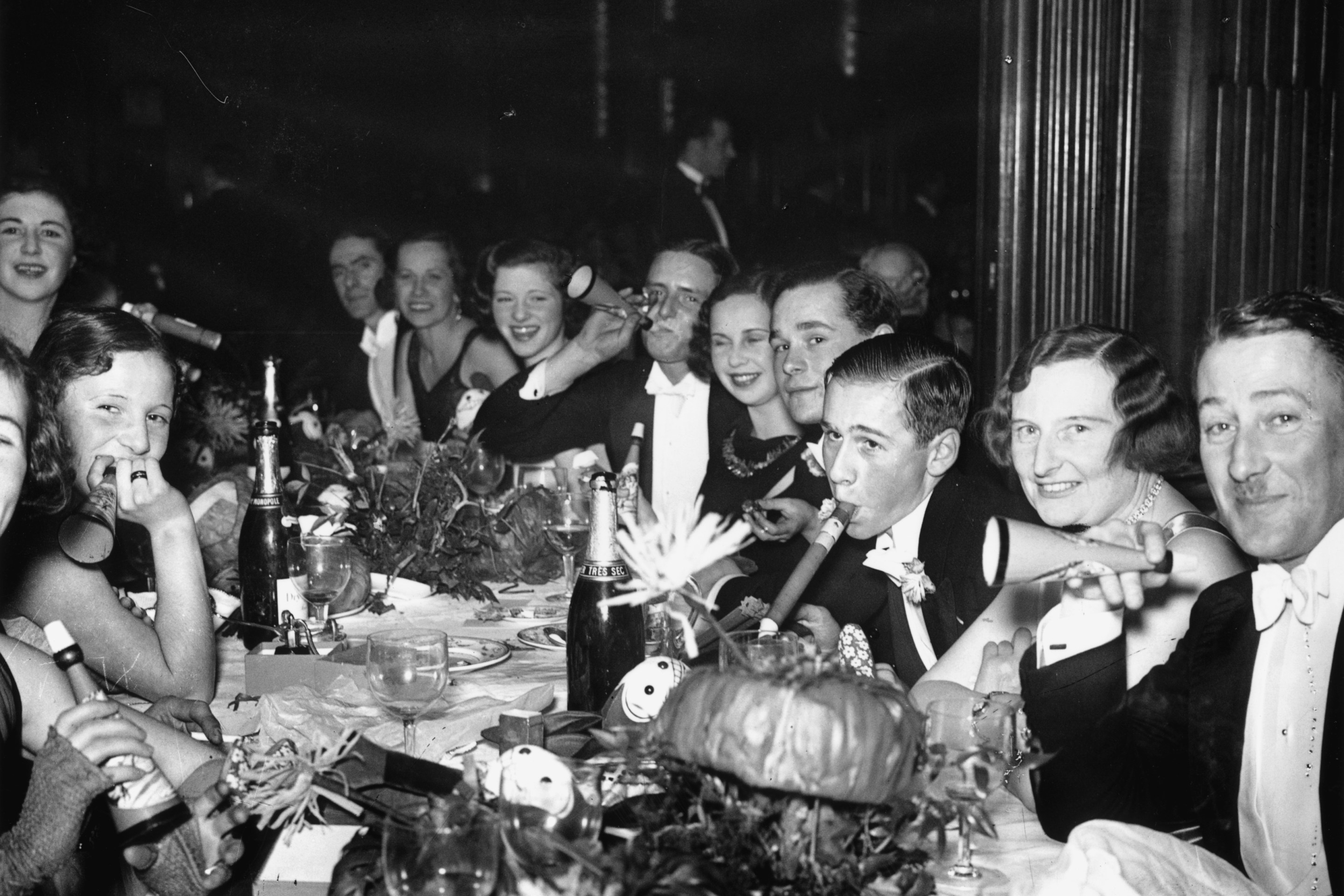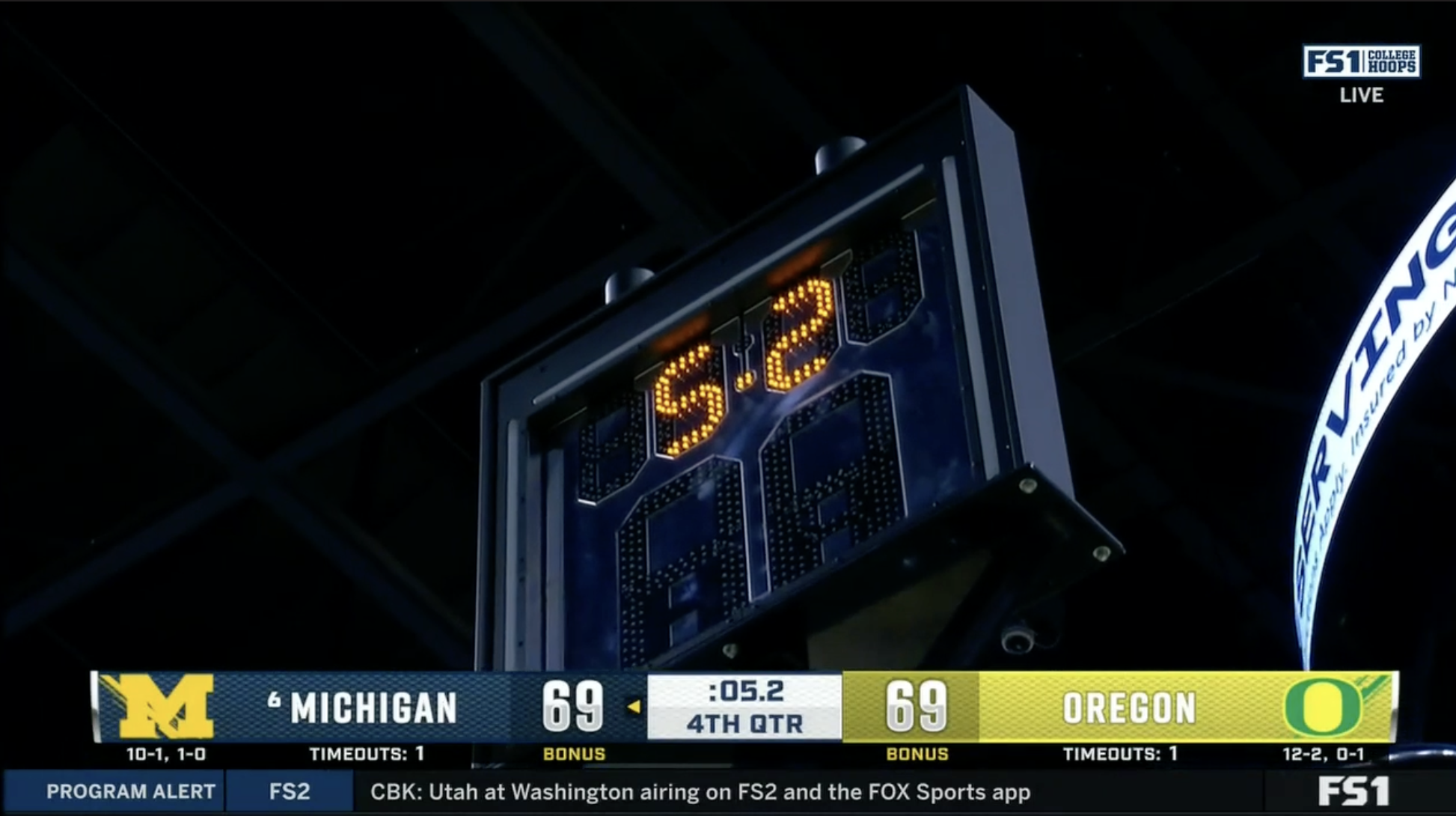I have terrible news to report. The worst news! I hate it so much.
The terrible news is: If you want to fry up some delicious, mixed seafood, your basic fritto misto type of deal, the perfect warm-weather foodstuff you'd get in a paper funnel in some Italian coastal town, the very smartest thing you can do to ensure it turns out the way you envision—uniformly crispy but also fresh-tasting, not brutalized by overcooking, airy rather than dense with oil—is to get and deploy a deep-frying thermometer or a candy thermometer. I despise this knowledge, which is contrary to just about everything I most desperately want to be true about all forms of cooking. I wish I could make it untrue. I cannot!
I'll understand if you're sobbing right now. Might I suggest, as a balm for your (and my) unbearable grief, a nice lil' plate of crispy fried seafood? We can make it together. Let's do it.
Here are some things you will need. (Other than the accursed thermometer.)
You're gonna need some fruits of the briny deep. I mean you're welcome to try frying up some seafood without seafood, if that is how you roll! But let the record reflect that this is not what I recommend. I recommend using seafood.
Feel free to pick and choose as you like from among the varieties you can imagine plausibly residing in that paper funnel, but if you're asking me, then I think you should get:
- One or two varieties of flaky white fish, like cod loin or flounder or haddock or sea bass, cut into pieces roughly the size of, oh, let's say a normal jalapeño, so it can cook quickly and be consumed in delicious small bites; and
- Some squid, especially tentacles if they're being sold separately from the tubes, but also some tubes, which you will cut into half-inch-thick rings; and
- Some shrimp of moderate size, peeled (except for the tails!), deveined, and butterflied.
Decide for yourself if you would also like to throw in what I consider to be more in the vein of Ye Olde Fisherman's Platter-style seafood-shack action, like shucked oysters or clams or sea scallops or catfish. It is not at all important to keep fritto misto-type stuff separate from Calabash buffet-type fare; these groups overlap at shrimp and I love them both as dearly as I love my own life, which I likely have foreshortened horribly due to my indulgence in them both. But the procedure we'll be following will yield fried seafood that is lighter and crispier and more tempura-like than what you'd typically get in a (wonderful) seedy Atlantic-coast seafood joint, much of which is breaded with cornmeal and just has a different vibe, and if that's what you want to eat today I'm afraid this blog isn't going to produce it even if you go for those varieties of seafood.
As for how much of this stuff to get, here is the thing. There's no denying that this cooking procedure is going to be kind of awkward, relative to, like, making a big pot roast for everybody. It's no coincidence that this stuff typically is served in small portions, as either street food for one person or as an appetizer: You're going to be frying in small batches, so as to keep the oil's temperature high and get the crispiest, freshest possible result; and you're going to serve each batch immediately, within seconds of it coming out of the oil, so that it can be devoured hot and crispy. And in between batches you're going to have a few minutes of non-frying activity, including whipping up some more of the batter (which must be extremely cold for best results), as you wait for the oil to return fully to the exact right temperature before you put the next batch into it. What I'm saying here is to err on the side of getting not much seafood, enough that, when all is said and done, there will have been a couple of shrimp and equivalent amounts of the other stuff per person, and trusting that between the breading and, like, a bright, tart salad or whatever, this will constitute a satisfying meal. The alternative is for you to spend all fucking day standing next to the stove, and I would not wish that upon anyone.
You will also need a few lemons, which you will slice as thinly as you can manage without hacking your fingers off or fearing that you might. Also I recommend getting a couple of zucchini, and cutting them into what strike you as moderately thin french-fry shapes. You'll need quite a bit of sturdy cooking oil, like vegetable or canola; enough to put like five inches of oil into a heavy-bottomed pot or Dutch oven. You'll need, to start with, a cup or so, each, of flour and cornstarch; you may need more depending on how much seafood you got. (A low-protein flour like cake [CORRECTION: This parenthetical originally said "or bread" here, because I'm a doofus who types too fast for my brain] flour, or a low-gluten flour like rice flour, will give a lighter, crispier result, but all-purpose is fine, too, if that's what you have.) I have seen and tried recipes that recommend including a small amount of baking powder, like a teaspoon worth, for extra airiness; this is wonderful if you have some, but also fine if you do not. You'll need salt, naturally. And some cracked black pepper would not kill you, unless you have a deathly allergy to it.
And you'll need at least one liter bottle of extremely fucking cold sparkling water or seltzer or club soda or whatever. (Some recipes out there for recommend using, like, Sprite for this type of frying, but I will not allow it.) Keep this on ice or in the coldest part of your refrigerator until the very moment you need it. The colder the batter on your seafood when it hits the oil, the lighter and crispier it'll be when it comes out.
(If you want to whip up a homemade garlic aioli for your seafood, hell yeah! Kick ass, buddy. I admire your ambition. Here is a perfectly fine and very simple and totally optional way to whip up some garlic aioli: Mash a couple cloves of garlic into paste with the side of a big knife or smash them through a garlic press. Whisk together an egg yolk, a couple teaspoons of lemon juice, and a minor dollop of dijon mustard in a bowl. Whisk into that like a third of a cup of extra-virgin olive oil—whisk whisk whisk, very energetically, to create a smooth emulsion. Then whisk in the garlic and a lil' salt. That's it. That was a lot of whisking! All of this was optional and your choice and not my fault.)
That's all the ingredients. Let's cook now.
Or, well, wait, let's not quite cook yet. The first thing to do is to cut the seafood into the sizes I specified up above, and then array the seafood on some paper towels on a plate and sock it in the fridge for a little while. Just, like, an hour, maybe? This will dry it out juuuuust a little bit, to prevent sogginess when this stuff comes out of the oil and sits on a plate. You're free to skip this step; your seafood will be fine if you do. But this is a good practice, with the white fish especially.
OK. Now. Haul this crap back out of the fridge. It is time to do things that are actually like cooking. Pour four or five inches of oil into your big pot or Dutch oven—it's important that the pot be genuinely large for this, both so that the volume of oil in there will be great enough to withstand having some cold seafood dropped in it without plunging down to room temperature, and for the sake of avoiding this—and put it over high heat on the stove. Typically I would tell you to test the temperature of your oil by dunking the tip of a wooden spoon in there and seeing if it sizzles, but no, alas, that is not going to work here. The sad fact is, you need the oil to be 350 degrees—not sizzling-a-spoon degrees, but 350 degrees. Therefore it is my great shame to recommend using a dang deep-frying or candy thermometer, like this one:

Dunk that sucker down in there, and clip it to the side of the pot, so that the tip of the thermometer is well down in the oil but not touching the sides or bottom of the pot.
After a while, your oil will be within five degrees of 350; within a couple of minutes it will hit the magic number. Now it is time to very quickly whip up the batter for your seafood. In a bowl, stir together the flour and cornstarch and a pinch of salt (plus the baking powder if you decided to go that route). Now, with a fork, stir in a couple cups' worth of the insanely cold sparkling water juuuuuuuuust until it's mixed in there and all the dry stuff is wet, and absolutely no more than that. For one reason, you don't have time for more mixing than that: This stuff is best at its coldest, and it's at its coldest right now. For another thing, extra mixing means more development of however much gluten is in the flour, which means chewier and denser results, which is not what we are aiming for here. If there's any sparkling water left in the bottle, stick it back in the fridge or the ice bucket.
Now, gather up a nice moderate handful of fish pieces, and shrimp, and squid rings and tentacles, and zucchini pieces, and (yes, dammit, yes!) a couple of lemon slices. This will be your first batch. Drop these things into the batter. How's the oil? Is it 350 degrees now? Let's imagine your answer is yes. In that case, yes it is. Stick your damn hand down into the bowl—the bowl of batter! Dear God do not stick your damn hand down into the pot of oil!—pull the first batch out of the batter, let the excess drip off it for a second, and then gently drop it into the hot oil. The way to do this is to lower it right to the surface of the oil, so there's no empty air for it to fall through and make a splash, and then release it. If you're nervous about this, it's fine to do it one piece at a time, so long as you work quickly and get this whole first batch in there within like 20 seconds. If the thermometer is in your way, you can grab it with an oven mitt and pull it out of there for now. In fact that's probably a good idea, so that the food doesn't all clump around it in there.
The seafood (and zucchini and lemon) should be sizzling fantastically in there. If you have a wire spider, you can use this to kinda move things around and make sure they're not sticking together in a huge nightmare wad of tentacles and lemon slices; metal tongs will also work, or a metal or sturdy wooden slotted spoon. Nothing rubber or plastic, please. In any event, assuming you used a large pot and thus a large volume of oil and it really was 350 degrees when you dropped this batch in there, and that you cut the fish into small pieces so that it will not lag behind everything else, this stuff will be fully done in under three minutes, and possibly within 90 seconds; as soon as it appears crispy and a light shade of gold, and nowhere near the rich golden-brown of, like, a hush puppy, extract the first batch from the oil with that wire spider or slotted spoon or pair of metal tongs and place it on either a wire drying rack over paper towels (best) or right on a bed of paper towels (also fine). Sprinkle some salt and grind a little pepper on there. Sing the alphabet song at a normal speed and at a thunderous volume that makes your neighbors immediately call for an ambulance. There. Now serve the first batch to whoever is going to eat it. (With the aioli, if you dared.)
Wait just a minute, you are saying. Back the damn hell up. You're frying the freaking lemons! That's right! Not only am I frying the freaking lemons, you also are frying the freaking lemons! This is a real treat. Take one of those lemon slices and bite right into it, when you get a chance, rind and all; it's crispy and tart and bitter and the juice is ever so slightly sweetened by having been cooked at high temperature. It's perfect. Fry the freaking lemons!
There's likely more seafood and zucchini and lemon to cook. Stick the thermometer back on the pot. You'll see that the oil has cooled quite a bit. You mustn't insert any more food into it until it has returned all the way to 350 degrees, no matter how much you'd like to be finished sooner than that. This is tedious! But it is the only way. If you give into the temptation to cheat, you will get soggy, oily seafood; the fish and zucchini in particular will be gross, like a greasy sponge. Hold out for 350 degrees! You can do it. I believe in you.
After that, repeat. By the time each next batch comes out the previous one will be long gone, because this stuff is absolutely heavenly: Bright and light and crispy, hot, fresh, gently briny, just oily enough. As the cook this puts you at a disadvantage: You were cooking, toiling thanklessly over a hot stove, while everybody else was devouring all of your precious shrimp and squid and fish and zucchini and lemon. Fiends! Ingrates! Why did you ever want to feed them? They can all go to hell! The last batch must be for you and you alone, fending them off with the pointy end of the accursed thermometer, eyes wild with jealousy and bright with violence.







